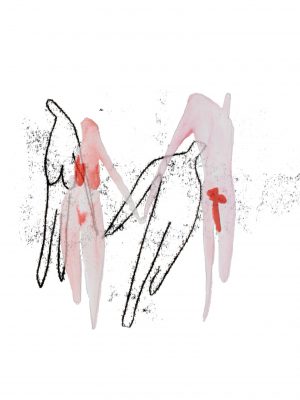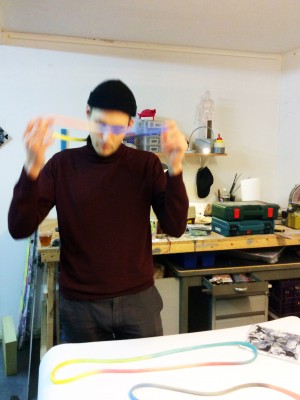CURRENT OBSESSION:
Contemporary Jewellery is often mentioned as an avant-garde phenomenon. But what was once believed as field’s most important forté – tireless pushing of boundaries and non-stop experimentation are slowly fading. I see the appearance of distinctive “trends”, when certain aesthetics step into the spotlight and more students are “following” those trends. You have recently graduated from Alchimia jewellery school in Florence. I know that the school has it’s own aesthetic, that is very recognizable. Your work is nothing like that. How did you manage to obtain such independence?
Nadege Roscoe-Rumjahn:
I can answer this twice.
1. I completely agree with a lot of your previous statements about the existence of “trends” or at least the existence of aesthetic similarities that emerge between groups of people and even schools. And it is funny because there are certain aesthetics that I find absolutely attractive. There are certain compositions, color combinations, techniques and materials that could literally melt in my mouth. I could own them all and just spend all day staring at them. However, the aesthetics I am most drawn to are the opposite of what I would ever be capable of producing. I couldn’t even do it if I tried; even if I copied it bit by bit – I swear it would look nothing like the desired intent. That beauty, that harmony, those “trends” (or at least the ones I would choose to follow), that result is a physical impossibility in my hands.
2. One of the first questions Ruudt asked us was: “What is jewellery and why do you make it?” We had to answer with a video. Surprisingly (or maybe not so surprisingly) I didn’t have an answer. I think that question loomed in the back of my head (and truthfully still does) especially when working around emotionally rooted themes, such as intimacy and the human body.
Being able to justify or rather finding an approach or answer to why these themes fit into the world of jewellery became a struggle within my work. Drawings were the start, the thinking process, the problem and in a way the end result. And even though it is not original: drawing is like handwriting; it is unique, personal and completely reflects the author. I think that the pull and push, that search for the attraction and repulsion within the body of work and within the pieces as jewellery led me to my independence. Following the drawings couldn’t have led me to anything else.
C.O.:
During a conversation I had with your professor Ruudt Peters, he mentioned that the process was highly personal and groundbreaking for you. Please, tell us about it if its not too sensitive.
NRR:
Did he? {laugh}
I am a little bit of a drama queen. I have been since I was three, just ask my mother.
C.O.:
Through the process when obsessive drawing becomes an intertwined, chaotic textile, jerky and unpredictable, your pieces come to life. Under which circumstances and when did your hand reach for a sewing machine.
NRR:
May 3rd, 2011? (couple of months before graduating)
No, I am kidding. I spent a lot of the year trying to capture or translate the energy, emotion, volume, intensity, blah blah blah, of what was happening on paper and translating that into the 3rd dimension. I was working in fabric, but in more of a “soft sculpture” way, let’s say. Mostly out of frustration, I made a couple two dimensional drawings on fabric with the sewing machine that were more to the point than a lot of the previous stuff. The sewing machine was really the key, it had been there all along, but it was only once I started using it as a pen that the material created itself and the final pieces started coming out.
















